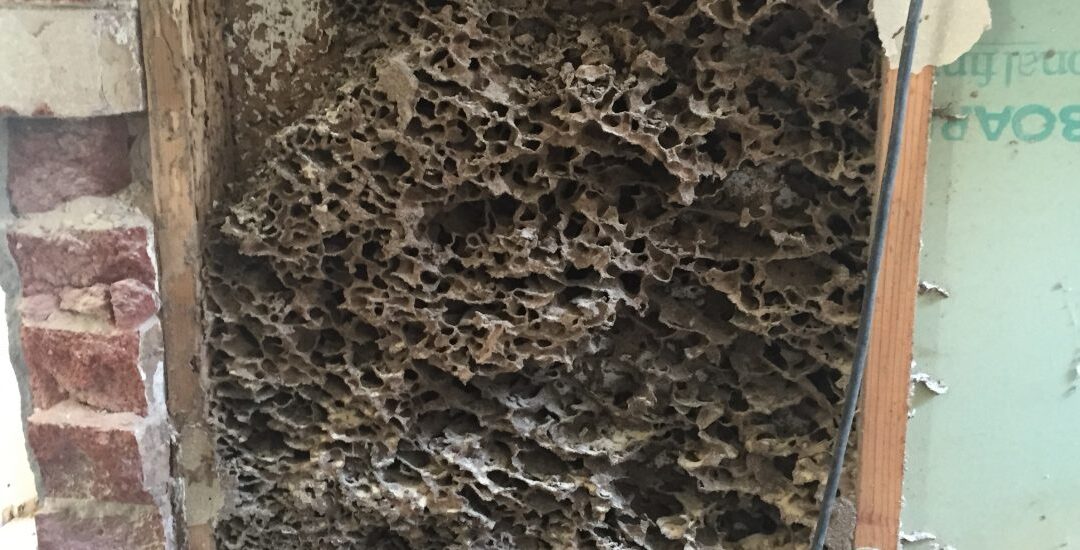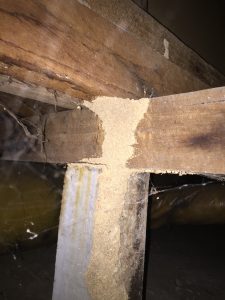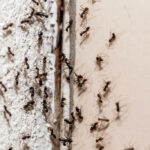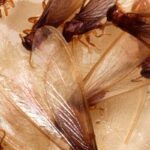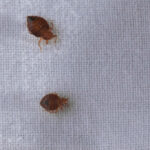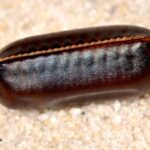Owning a home is still a great Australian Dream. And while it may seem harder to achieve, if you scrimp and save and achieve that dream, the sense of satisfaction can be overwhelming. It is an emotional investment by you. But that dream can literally come crashing down around your ears if your home has an infestation of termites. This happens to around 180 000 Australian homes every year.
The CSIRO has reported that almost 1 in 3 homeowners has reported termite damage or the presence of termites. And there is an 80% chance that your home is within 25 metres of a termite colony. While you may see some termite mounds here and there, the most destructive termite found in Australia is a subterranean termite – Coptotermes acinaciformis. They are found in urban areas where there is a high number of eucalyptus trees. Does that sound like your neighbourhood?
Termites eat 24 hours a day, and the queen can lay up to 1000 eggs per day. Plus, in ideal conditions, the queen can live for 20 years.
The repair costs for termites is over 1.3 billion dollars per annum. Plus, Home Insurance does NOT cover the cost of repairs to damage caused by termites to your home.
As mentioned the reported cost of termite damage, Australia wide is more than 1.3 Billion dollars per year. But this figure may not be the true cost. The real cost of termite damage may not be realised until your house is sold. A study conducted in Australia back in 2015 concluded that a previous termite problem found in a home could reduce the selling price by up to 25%.
Now it goes without saying that you should organise a termite inspection before purchasing a home. Indeed the same study showed that 99% of people did such a thing. But then it also showed that 75% of prospective buyers would not buy the house if termites appeared in that report. It is difficult to translate these costs to that 1.3 Billion dollar figure.
What to Look for?
There are two main signs that anyone can look for which would indicate termite activity.
Mud Tunnels
This is one of the most common signs of termite activity. It is a narrow tunnel of mud the termites have built so they can move without exposure to the elements. These tunnels are generally located on the outside walls of houses, bricks, on concrete slabs and house stumps.
Damaged Timber
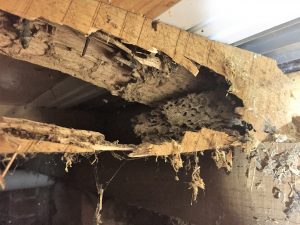
Often this type of damage is only ever found by accident. Vacuuming the carpet and you bump into the skirting board and it crumbles onto the floor.
Paint bulging or floorboards bulging can also indicate termite damage in your home.
What NOT to do if you discover termites
The number one rule if you find mud tunnels or damaged wood is to NOT disturb the termites. This will not eliminate the problem. They will just focus their eating efforts elsewhere.
The worst thing you could do is replace the damaged timber yourself. You may have stopped the termites in one area of your house, but without an effective elimination and treatment solution, all you have done is delayed the inevitable.
Call the Professional
Having your home inspected by a professional Termite Technician is the first best step to making your home termite-free. The second step is having a termite protection system in place.
The Australian Standard for Termite Protection (AS3660) recommends that inspections be carried out every 12 months. If your home is identified to be in a high termite risk area, then every 6-9 months is recommended.
Even with the most thorough protection schemes termites can sometimes build bridges or tunnels and circumvent your termite barriers.
These breaches can be detected through regular inspections and dealt with, minimising damage and cost to your home.
There are numerous kinds of termite treatments to protect your home:
Physical Barriers
- Ant Caps and other such barriers exist. However, termites can build their mud tunnels to bridge these barriers.
- Sheeting fixed to the slab edge. A polymer sheet that prevents concealed entry by termites into the timber structure.
Chemical Barriers
- Soil treatment around the perimeter of a building and around the perimeter of any subfloors of your home. This helps eradicate termites trying to gain entry into your premise
- There are chemicals which are perfectly safe and non-harmful to your family and your pets.
Termite Baiting
- Giving the termites an alternate food source other than your house.
- It does rely on the termites finding the bait and returning with it back to the nest.
- Good idea in areas where there is a lot of known termite activity.
The method to be used for prevention or elimination is different depending on the house. New house, or those under construction would have a better option with the physical barriers than those already built, for example.
The professional Melbourne pest controllers at Cannon Pest Management will know the best and most effective way to rid your home of termites and protect your home going forward.
Call 1300 025 948 now to find out more.

